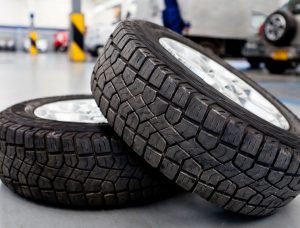Truck driver fatigue can lead to unsafe road conditions and increase the possibility for accidents. As a professional truck driver, it is your responsibility to maintain your health and sleep schedule in order to ensure safety on the road. Read on to learn more about how truckers can master to art of the long haul trucking!
1. Keep It Cool
When nightfall or cold weather hits, we have the tendency to crank up the heat because the warmth reminds us of our cozy beds. This is the opposite of what truckers should be doing and thinking during the final hours of the long haul. Turn the heat off! By keeping the temperature down in your truck, you will be more alert and concentrated on the road.
2. Sing Along to The Radio
The hum of quiet music can actually put you to sleep. So, pass yourself the aux cord, and crank up your favorite tunes. No one can hear you, so don’t be afraid to sing along!
3. Swap Coffee for High Energy, Healthy Foods
We suggest that truck drivers avoid inhaling large amounts of caffeine. Too much coffee can be unhealthy, and coffee is not a sustainable source of energy. Eventually, you will crash as some point during the night. We recommend that truckers swap at least one cup of coffee for a high energy, healthy snack such as fruit, almonds or protein bars.
4. Take Mini Naps
On top of maintaining a consistent sleep schedule, California truck drivers should also take power naps throughout the day. If you feel yourself becoming drowsy, pull over and rest. Additionally, taking short naps can actually give your body the extra boost of energy that it needs. So give in to your body, and take a little snooze before you get back on the road!
5. Open the Window
Let the oxygen and cold air flood into your cab. The cold air will shock your senses, and give you additional energy. This only works temporarily, so make sure to stop at the next rest stop to rest up.
6. Stay Hydrated
Water is your new best friend. We understand that drinking lots of water can result in numerous bathroom breaks during your drives. However, becoming dehydrated is a major cause of fatigue. Not only will drinking water keep you alert, but it will help you to maintain your health as well.
7. Listen to Audiobooks
Listening to an audiobook or podcast will help keep your mind active during the long haul. Take this opportunity to learn something new, possibly even a new language! This will help keep you interested and engaged during your drive.
8. Stretch Your Legs
When you start feeling tired, get out of your truck and move around. Getting the blood flowing will give your body the extra energy that it needs. You can use your truck and trailer inspection as an opportunity to get your body moving.
9. Don’t Exhaust Yourself
This tip is crucial. Truckers must listen to their bodies! If you begin feeling tired, don’t hesitate to pull over. Ultimately, safety is the most important factor will inside your truck. Making sure you are in prime condition to navigate the roads not only ensures your safety, but the safety of all other drivers.
Are you interesting in becoming a professional truck driver? Advanced Career Institute offers California CDL Training Programs to help aspiring truckers receive their Class A CDL. Professional Truck Driver Training is held at three locations in Merced, Visalia and Fresno. To learn more about Long Haul Trucking, head over to our Class A CDL Training Program page.







